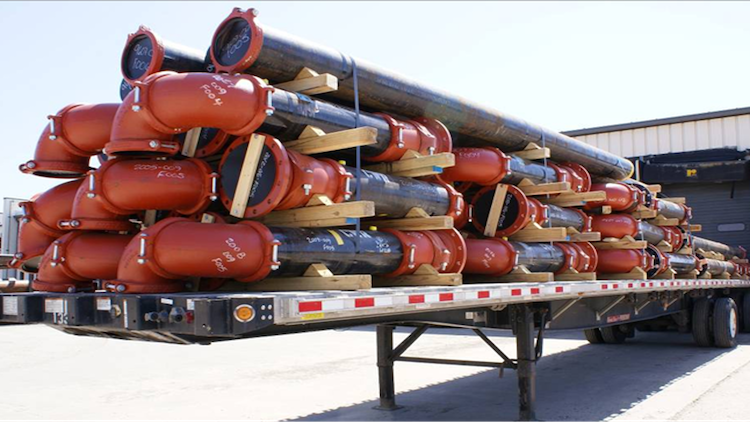When we emerge from the extreme days of the COVID environment, there will be some lingering effects that become a permanent part of our way of doing business. Management of the supply chain is probably one of the most significant.
I was at a national association conference last month with nearly two thousand attendees. Last year I moderated a panel at the same conference talking about early supply chain engagement. The reception from the audience was interest, but not urgency. Fast forward a year and the same conference had a thread of supply chain issues running through every presentation. We’ve all seen the pictures of backed-up ocean freighters parked off the west coast. We’ve seen costs for construction commodities rise to 200% or 300% of previously predicable prices in under a year. The existing way of handling these risks has not responded to the challenges.
These disruptions include things like:
- Deliveries – Did you know there’s a trucking shortage? Trucking companies prefer shorter local deliveries to long haul. They may place a surcharge on longer deliveries not accounted for in contractor pricing.
- Raw materials – We’ve all heard about the chip shortage and how it’s affected the car industry. One missing part can stop hundreds of products from going out the door.
- Labor – Many entities would like to add more production slots, but availability of labor can limit production.
The nature of collaborative delivery is open and honest communication throughout the contract chain and throughout the design and construction period. The contract models we use give us a greater opportunity to have discussions about risk allocation and sharing in our new, uncertain environment.
Collaborative Delivery Has Options Design-Bid-Build Doesn’t
In the old models going back to design-bid-build, a contractor took 100% of the risk for project material pricing. In my former estimating roles, we would allocate a single-digit percentage for escalation post-award and that would be sufficient for the contract period. That is no longer sufficient nor prudent.
Why haven’t we done better as an industry to face supply chain issues?
The hindrances have historically been contract language. For example, if a contractor can’t get paid for materials stored, there is not an incentive to purchase early. Some agencies also don’t allow for early owner procurement to mitigate design or delivery risks.
As a manufacturer, we have experienced a lot of the same pressures as our customers: raw material shortages and cost increases, trucking shortages, and higher freight fees. Being vertically integrated allows us more control over our production process, but we’re not immune. What used to be “standard” delivery times now need to be verified after order placement and continuously throughout the contract.
In the era of COVID, supply chain disruptions have become more prevalent than ever. Having moved to the supply chain side of project delivery, I’ve gained more insight into how a seemingly minor issues can have a tremendous downstream disruption. Better transparency by supply chain partners paired with frequent communication with the project team can help to mitigate these risks.
How Collaborative Delivery Mitigates Supply Chain Risks
There are some ways that collaborative delivery methods can mitigate risks associated with supply chain issues:
- Allow for early procurement. The owner and delivery partner should discuss and decide key processes and engineered systems. Allow for POs and payment for completed materials stored at manufacturer, site, or other agreed location. This locks in orders and manufacturing slots.
- Perform a detailed supply chain assessment. Find out where the vulnerabilities are in all major materials: concrete, asphalt, pipe, engineered systems, or even electrical cable. How about furniture? A major contractor couldn’t turn over a 10-story building because the building furniture was delayed and hadn’t arrived from overseas.
- Bring the supply chain into early schedule discussions and require updates. At Victaulic, we have improved how we communicate with contractors on open orders to improve reliability of deliveries. Delivery times quoted at bid time may change after only a few months.
- Reassess frequently and set action plans before local events hit. More often than not, these are weather related to shut down a region’s activity completely. Has alternative sourcing been developed for key items?
- Put escalation in the shared contingency pool. One model is that the contractor owns, say, +/- 10% cost increase or decrease on the base pricing. Over or under that is a cost or backfill to the contingency.
Under collaborative delivery, both in CMAR and DB, the owner and contractor have a longer term to plan and therefore manage supply chain issues. Including key vendors and suppliers can provide a vehicle for frequent check-ins on production lead times and status of engineering submittals.
Collaborative delivery is becoming the preferred project delivery method because of the ability for an owner and delivery partner to work together and tackle tough project issues. Mitigating supply chain risks is another aspect to this collaboration that enhances the benefits of the delivery model.

